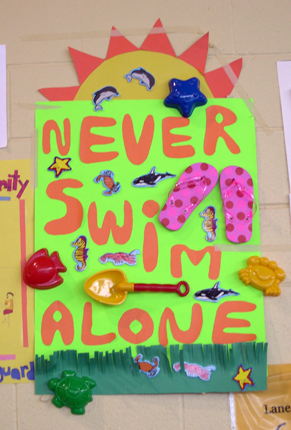In Ontario, elementary school-age children 5 to 12 years of age have been at less risk of drowning than other stages of life. Drowning victims in this age group tend to be in the water as opposed to toddlers who tend to be near the water.
Lakes and rivers are the settings that account for more than half of drowning among 5 to 12-year-olds. Playing in water and swimming are what two-thirds of 5 to 12-year-old victims were doing when they drowned.
One-quarter of victims were non-swimmers. And although children of this age are often playing with friends, one-quarter of victims were alone and another one-quarter were with other minors (no adults present).
:::

Drowning prevention tips

Learn to swim.
Parents should ensure their children learn to swim - a fundamental requirement to prevent drowning. Because most non-swimmers do not take swimming lessons as adults, it is crucial that children learn to swim when they are young. But surveys tell us that half of Canadian children have never taken swimming lessons.
In its Swim to Survive® Standard, the Lifesaving Society defines the minimum standard of basic swimming skill for Canadians: roll into deep water, tread water for one minute and swim 50 metres. These are the essential minimum skills required to survive an unexpected fall into deep water.
The Lifesaving Society's Swim and Lifesaving programs offer a wide range of aquatic training well beyond the Swim to Survive basics.
:::
Swim in supervised areas.
Parents should ensure their children swim only at lifeguarded pools and beaches, and under direct adult supervision at the cottage or in the backyard.
Swim with a buddy.
Over half of child drowning victims are alone. In many cases, lives would be saved if someone with them used a reaching aid or called for assistance. Lives will be saved if children learn this never-swim-alone message and adopt this behaviour throughout their lifetime.
Wear your lifejacket.
Most drowning victims never intend to be in the water, certainly not boaters. Ninety per cent of victims in boating fatalities are not wearing lifejackets. Ironically, it's not unusual to see children in a boat wearing lifejackets but not the adults. Putting on your lifejacket when you get into a boat should become as normal as putting on your seatbelt when you get into the car.
Ice is risky - always. Measure clear hard ice in several places.
Each winter drowning as a result of falling through ice makes headlines. Never go on the ice alone. A buddy may be able to rescue you or go for help if you get into difficulty. Keep away from unfamiliar paths or unknown ice. Before you leave shore, inform someone of your destination and expected time of return.